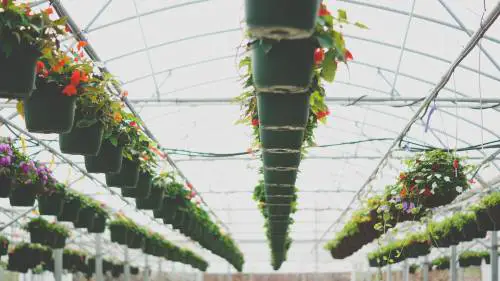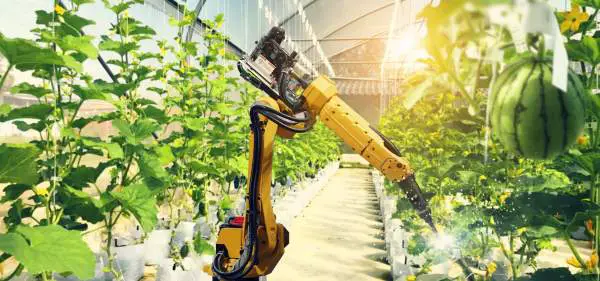Hydroponics is a great way to grow a garden, as can be seen from the sharp rise in its popularity. There’s a lot of speculation about what exactly you can and can’t grow in a hydroponics system. So let’s look at trees and the logistics of growing them hydroponically.
Can trees be grown hydroponically? Like the majority of other plants, trees can be grown hydroponically if you do it right. That also means that while you can grow trees hydroponically, you can’t grow all trees in a hydroponic system.
While it’s possible to grow a tree hydroponically, if you want to do it successfully you need to look at things like the species of tree you want to grow, the size of your setup, and the method you’ll use you grow your tree. We’ll go over the main factors you need to consider before you start growing a tree hydroponically.
What trees can be grown hydroponically
You have to remember that when you grow a tree, you’re growing a long-term plant. Some trees live hundreds of years, like oak trees, and they grow very large. Even if you have a big hydroponic greenhouse, it just doesn’t make sense to grow a tree like that. Nor is it likely even possible to keep a tree-like that living in your setup for its lifetime.
Basically, full-size tree species shouldn’t be grown hydroponically. Ever. Aside from all the other issues, their root systems don’t handle it well and often choke healthy roots.
So, if you really want to grow a tree hydroponically, what options do you have?
You still have plenty of choices, but you need to look for dwarf species. A lot of hydroponic gardeners prefer growing small, dwarf fruit trees like lemon and banana trees. These miniature trees still produce fruit, often the same size as regular fruit, as long as they’re cared for properly. As long as you’re growing a dwarf species, you have pretty limitless options.
Methods you can use to grow trees hydroponically
If you want to grow a tree hydroponically, you can try the liquid culture approach. Chances are if you go this route you’ll end up switching your setup to one that uses a growing medium. This will help make up for the density and mass of the tree’s root structure.
Going forward, we’ll assume we’re talking about methods using growing mediums.
Flood and Drain
The flood and drain system is also commonly called the ebb and flow method. In this simple system, the main container holds the plants and medium (if you’re using it). Then, usually by timer, the container is flooded slowly to a preset level before slowly draining the water and nutrient solution back out.
Drip irrigation
The drip method, or constant water drip (CWD), is more common for growing trees hydroponically. That’s due a lot in part to the fact that it’s more flexible and easier to adjust to the size of a growing tree. Basically, in a drip system, there’s a portion that holds the plant and growing medium while a container underneath provides the nutrient solution. From there, you pump it a bit and let gravity take care of the rest.
Using different growing mediums
Because of the weight and size of the tree, using a growing medium is the only practical way to grow a hydroponic tree. When choosing your growing there are a few choices that stand out for tree growth:
Rice husk
Rice husks or hulls are made in the process of farming and preparing rice and the husks are then processed for use in hydroponics. They’re a natural substrate of medium weight, and they last through quite a bit of use before they start to degrade. Note: always ensure the rice husks have been boiled and processed to avoid contamination issues like fungus and disease.
Vermiculite or Perlite
These are pretty common, lightweight mediums. Made from expanded mica and volcanic rock respectively, they’re often used together. However, because they’re so light it’s better to use them for smaller plants like seedlings and saplings.
Rockwool
Rockwool is made of rocks melted and reconstructed into an insulation textured medium. It’s a good solution for trees of any age and weight, plus it helps retain both water and oxygen.
Requirements for growing trees hydroponically
Once you’ve got your hydroponic system up to grade to handle a tree, you still have more work to do. Like basically any other plant, your tree will need nutrients, light, temperature regulation (and sometimes humidity regulation too), and more. Here’s a quick rundown of the considerations and basics you’ll need to add in:
Lighting
Your tree will need plenty of like to grow, no surprise there. How much light your tree needs can vary, but expect to be providing a solid 8 to 12 hours daily. No, your regular house lights don’t count either.
You need to provide your tree with some special growing lights. That means you’ll need to invest in either metal halide lamps, high-pressure sodium lamps, or LED growing lights. The good news is that the lights will help with your issue of keeping enough heat around your tree.
Temperature
With your lighting, you should have less work to do in maintaining heat. To be sure your tree is warm enough, keep a thermometer in your growing area and routinely check the water temperature. Remember, different species have different temperature preferences, but so do trees of different ages. Seedlings prefer being grown in a solution with a temperature between 70 and 75 degrees Fahrenheit. Older trees can tolerate a wider range, usually anywhere between 65 and 80 degrees.
Ventilation
Your ventilation doesn’t need to be a super-advanced system, but make sure you’ve got adequate air movement. This helps your tree get CO2 to convert, and it gives the helpful bonus of preventing harmful mold and fungi.
Humidity
This is where you’ll need to do a little research on the type of tree you’re planning on growing. While many trees do well with an ambient humidity level, some have specific requirements or just plain do better at a certain level. For example, the Meyer lemon dwarf tree can handle most ambient humidity, but it really thrives at 40 to 50%.
Future Transplants
At some point in the future, you’ll have to move your tree into a bigger container. It’s better to plan for this in advance and set up your system accordingly. Factoring in the weight of materials and ease of access in your system early on means an easier time when you have to transplant.
Nutrients
If you’ve already got an established hydroponics system, you’re no stranger to adding in a nutrient solution. Make sure your nutrient combo is right for the tree you’re growing, and always remember to start at lower nutrient levels and work up.
Testing
Yes, you have to test your pH and nutrient levels as well as practice proper maintenance. While you probably already knew that, the acceptable levels are different from other hydroponic plants. Most plants do well in a slightly acidic solution with a pH range between 5.5 and 6.5. That being said, always check for your tree’s optimal pH. As an example, an apple tree prefers a pH range of 5.0 to 6.5, while a crab apple tree needs a pH range between 6.0 and 7.5.
Pollination
If you’re already planning on growing a tree hydroponically, you may have wondered what you’ll do if you don’t have pollinators at work. Pollinators, like bees, naturally distribute pollen from tree to tree. If you’ve only been growing self-pollinating plants like lima beans and peas, you’ve never had to worry about this before. To pollinate your tree, swirl a small paintbrush in the blossoms of the branch of another tree of your same species. Then transfer the pollen to the blossoms of your tree, and you’ve done it.
Related Questions
What are the easiest trees to grow hydroponically?
Trees are always going to be a skill level up from say, growing lettuce. That being said, some trees are easier. Meyer lemon dwarf trees, miniature cherry trees, dwarf banana trees, and dwarf apple trees tend to be less temperamental for less experienced gardeners.
Can I use my hydroponics system to grow saplings you transplant into soil later?
Absolutely! Keep in mind when you’re using hydroponics for saplings only that while you won’t have to modify your setup as much as for a dwarf tree, you will need to make plans to safely change its environment without causing shock.
How long until my hydroponic trees produce fruit?
Hydroponically grown fruit trees will produce fruit regularly as long as you’re pollinating them. Just like any other fruit tree, if you start with a younger tree (and for a hydroponic system you’ll have to), you can expect to care for it for 2 to 3 years before you see any fruit.





